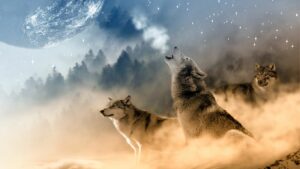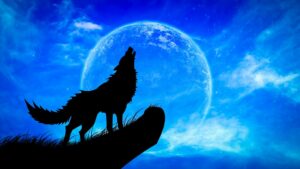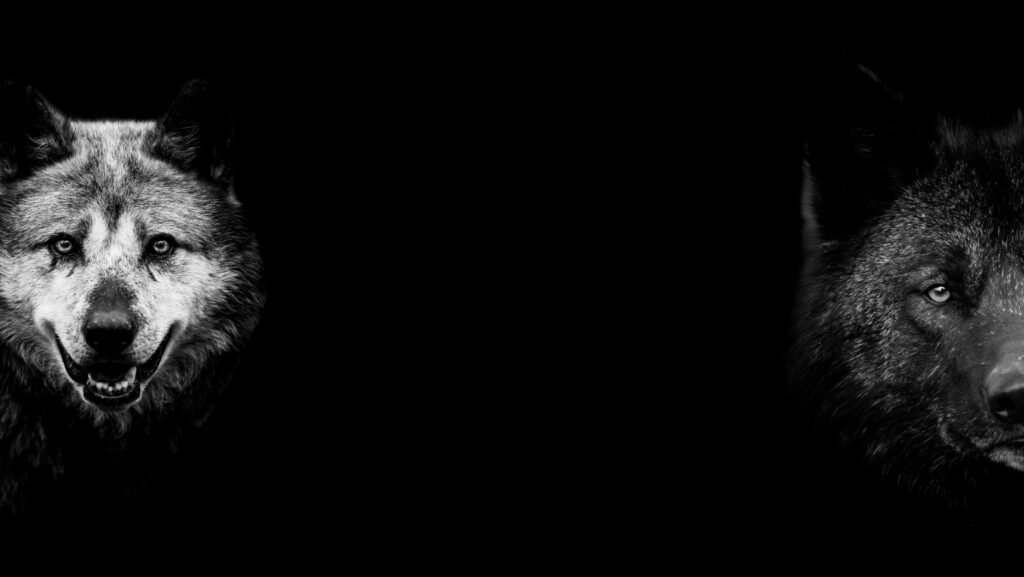Wolves Art
- Symbolism of Wolves: Wolves embody themes of freedom, loyalty, and resilience across various cultures, making them significant subjects in art throughout history.
- Cultural Representation: From ancient cave paintings to contemporary art, wolves are depicted in diverse styles that reflect cultural values and beliefs about nature and community.

- Artistic Techniques: Contemporary wolves art employs various artistic methods, including realism, abstract styles, and mixed media, showcasing their majestic presence and ecological importance.
- Environmental Advocacy: Many modern artists use wolves to address and advocate for environmental preservation, emphasizing their crucial role in maintaining healthy ecosystems.
- Connection to Humanity: The portrayal of wolves invites viewers to reflect on the intricate relationship between humans and nature, encouraging a deeper understanding of wildlife conservation.
Wolves have long captivated the human imagination, inspiring countless artists to capture their beauty and mystique. From ancient cave paintings to contemporary digital art, the representation of wolves reflects not just their physical form but also their symbolic significance in various cultures. These majestic creatures embody freedom, loyalty, and the untamed spirit of nature, making them a powerful subject in the world of art.
Exploring wolves in art reveals deeper connections between humanity and the wild. Artists often use their work to convey themes of survival, community, and the delicate balance of ecosystems. Whether through striking paintings or intricate sculptures, the portrayal of wolves invites viewers to reflect on their own relationship with nature and the importance of conservation. As the fascination with these enigmatic animals continues to grow, so does the artistic expression surrounding them, showcasing a timeless bond between art and wildlife.
The Allure of Wolves Art
Wolves art captivates audiences through its rich symbolism and aesthetic appeal. Artists express themes of freedom, loyalty, and resilience by portraying wolves in various styles, from realism to abstract interpretations. The instinctive behaviors of wolves evoke admiration and curiosity, compelling artists to capture their essence in paintings, sculptures, or digital media.
Wolves serve as powerful subjects in art due to their representation of the wild spirit. Many cultures view them as guardians of nature, symbolizing ecological balance and community. This fascination inspires contemporary artists to address conservation issues, raising awareness of the importance of preserving natural habitats.
From ancient cave paintings to modern installations, the artistic portrayal of wolves resonates with viewers. These works often prompt contemplation of humanity’s connection to nature, highlighting the intricate relationship between species. Artists utilize wolves to evoke emotions and encourage reflection on both individual and collective experiences.
The allure of wolves art continues to thrive, reflecting the ongoing interest in these majestic creatures. This enduring theme in the art world celebrates wolves as symbols of strength and beauty, reminding audiences of the vital role they play in the ecosystem.
Historical Context of Wolves in Art
Wolves have held significant meaning in various art forms throughout history. From ancient civilizations to modern times, these creatures have been depicted in myriad ways, reflecting cultural values and beliefs.
Ancient Depictions
Ancient depictions of wolves appear in various forms, including cave paintings and pottery. In the Lascaux Caves of France, artwork dating back approximately 17,000 years features wolves among other important animals, emphasizing their role in early human life. The Greeks often depicted wolves in mythological contexts, where they represented both fear and reverence. Roman art showcased wolves as symbols of strength, famously illustrated in the tale of Romulus and Remus, where a she-wolf nurtures the founders of Rome. Such depictions not only reflect the significance of wolves in daily life but also their association with survival and community.
Cultural Significance
Cultural significance attached to wolves shapes their portrayal in art across civilizations. In Native American culture, wolves symbolize loyalty and cooperation, often celebrated through totem poles and ceremonial artwork. In Norse mythology, the wolf Fenrir embodies chaos and destruction, representing duality in the human experience. Eastern cultures sometimes regard wolves as protectors, highlighting their role in maintaining ecological balance. Contemporary artists draw inspiration from these varied cultural narratives, using wolves to address themes such as conservation and the interconnectedness of nature. Through these artistic expressions, wolves remain powerful symbols of wilderness and humanity’s complex relationship with the natural world.
Contemporary Wolves Art
Contemporary wolves art showcases the ongoing admiration for these creatures, reflecting various themes from conservation to community dynamics. Modern artists continue to express the multifaceted relationship between wolves and humans through diverse styles and techniques.
Prominent Artists
Several notable artists capture the essence of wolves in their works.
- Carl Rungius: Known for his wildlife paintings, he focused on the majestic presence of wolves in natural settings, emphasizing their strength and beauty.
- Robert Bateman: An advocate for wildlife conservation, he portrays wolves with realistic details that evoke their spirit and importance in the ecosystem.
- Kira D. S. Becker: She combines traditional and modern techniques, often using mixed media to express the emotional connection between wolves and their habitats.
- Annie Leibovitz: A renowned photographer, she has explored wolf imagery, infusing contemporary culture with their symbolic power and grace.
Art Styles and Techniques
Contemporary representation of wolves involves various artistic styles and techniques.
- Realism: Artists employ realistic rendering, emphasizing detail to convey the physical majesty of wolves, often seen in wildlife photography and traditional paintings.
- Abstract: This style provides a stylized interpretation of wolves, focusing on their forms and colors to evoke emotions rather than exact representations.
- Mixed Media: Artists combine various materials such as paint, fabric, and found objects to create textured representations that explore the relationship between wolves and their environment.
- Digital Art: Advances in technology have led to vibrant digital portrayals, enabling artists to manipulate images and create immersive environments highlighting wolves’ roles in ecosystems.
Contemporary wolves art continues to engage audiences, prompting reflections on conservation and the primal connection between humans and wildlife.
Thematic Representations in Wolves Art
Wolves art encompasses rich thematic elements that convey deeper meanings and messages. Artists depict symbolism and environmental concerns, reflecting nature’s significance and humanity’s relationship with the wild.
Symbolism and Meaning
Wolves symbolize various concepts across cultures and artistic traditions. In ancient art, wolves represent strength, survival, and loyalty. They appear in cave paintings, where their ferocity and social structure capture human fascination. Native American art portrays wolves as wise and cooperative beings, embodying loyalty to family and clan. In contrast, Norse mythology often depicts wolves as manifestations of chaos and destruction.
Contemporary artists draw from these historical narratives, using wolves to address themes of community dynamics, resilience, and the instinctual behaviors that define pack life. Artistic interpretations capture the duality of wolves, showcasing their role as both feared predators and essential components of ecological balance. This symbolism resonates with viewers, prompting them to reflect on their responsibilities toward nature and wildlife conservation.
Environmental Messages
Wolves art often carries strong environmental messages, highlighting the crucial role wolves play in their ecosystems. Artists use their work to advocate for conservation efforts, emphasizing how the presence of wolves maintains healthy landscapes.  The reintroduction of wolves into ecosystems, such as Yellowstone National Park, illustrates their impact on biodiversity and ecological balance.
The reintroduction of wolves into ecosystems, such as Yellowstone National Park, illustrates their impact on biodiversity and ecological balance.
Through various mediums, artists convey urgent calls for habitat preservation and wildlife protection. Mixed media and digital art explore the fragility of natural environments, showcasing wolves in contexts that demonstrate the consequences of human encroachment. These environmental narratives evoke emotional responses, encouraging audiences to engage in conservation dialogues and action, underscoring the interconnectedness of all living beings.
Relationship with Nature
Wolves in art continue to inspire and provoke thought about humanity’s relationship with nature. Their portrayal serves not just as a reflection of artistic expression but also as a powerful reminder of the ecological balance they represent. As artists explore the themes of strength, loyalty, and resilience, they invite audiences to engage in meaningful conversations about conservation and the importance of preserving natural habitats. The ongoing fascination with wolves ensures that their symbolic significance will remain a vital part of artistic narratives, encouraging a deeper appreciation for these majestic creatures and their role in the ecosystem.



